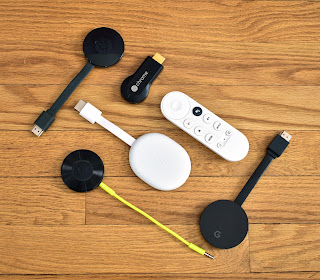 |
| Image by Y2kcrazyjoker4 - Own work, CC BY-SA 4.0, link |
The Windows device was first to come out. TiVo usage dropped over time and was completely unused despite being connected for many years (lifetime subscription meant it wasn't costing anything to keep it running).
That would seem to indicate I had settled on Roku and Apple TV as my streaming devices. But that isn't what happened.
I tried a product called Simple TV. It was rough around the edges, but I thought it had potential. So, in 2013, I added that to the mix.
As I said, rough around the edges. Quite rough. It allowed you to put TV stations on your network and watch them via Roku, very much like what Tablo TV does today. Simple TV was a trailblazer, but didn't complete the journey. I stopped using it entirely by 2015 and the company shut down in 2017.
The other device I used in those early days was the Chromecast. I both loved and hated it. It allowed my to easily put stuff on my TV from my Chrome browser on my computer, and I loved that. I didn't do it a lot, but there were times where that was the easiest way to do it.
I also hated it, because it didn't have its own remote, and I had to use another device, such as my phone, to find content then launch it to the Chromecast. I could not stand doing that. And I never used the Chromecast that way.
When Chromecast upgraded, I got new ones, and even today, I have the latest version, Chromecast With Google TV. It's an okay device, but I'm not a huge fan of the interface. But, it has an interface and I don't have to use my phone anymore. Unless I want to. I don't want to.
One other device I tried was the Mi Box, which is another Android/Google TV device. It was an okay device. It worked well, and I still have it. In a box. On a shelf somewhere. Again, nothing really wrong with it, just that it didn't bring anything new to the table. Roku and Apple TV together had everything I wanted.
While the Mi Box went on the shelf, Chromecast stayed connected, and I have a couple of Chromecast connected to TVs today, along with Apple TV and Roku devices.
And that covers the streaming devices I've tried. Except one. And it's a really popular device, but it didn't set my world on Fire. And I'll talk about Fire TV another day.






